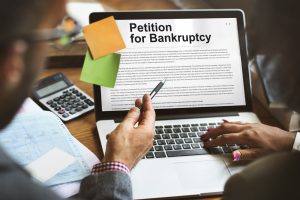
How to File for Chapter 7 Bankruptcy: A Simple Guide
How to File for Chapter 7 Bankruptcy and What to Expect If you’re overwhelmed with debt, you may be wondering
Error: Contact form not found.
Lorem ipsum dolor sit amet, consectetur adipiscing elit. Ut elit tellus, luctus nec ullamcorper mattis, pulvinar dapibus leo.
If you’re overwhelmed with debt, you may be wondering how to file for Chapter 7 bankruptcy. This legal process allows individuals to eliminate most unsecured debt and start fresh. While it may seem intimidating, Chapter 7 is more common and accessible than many people realize.
In this guide, we’ll break down how to file for Chapter 7 bankruptcy, step-by-step, so you understand exactly what’s required.
Before learning how to file for Chapter 7 bankruptcy, you must determine if you qualify. The process includes meeting both legal and financial requirements.
To qualify, your income must fall below your state’s median for a household of your size. If it’s above, you may still pass the means test by showing limited disposable income after necessary expenses.
You cannot file Chapter 7 if you already filed and received a discharge under Chapter 7 within the past 8 years or Chapter 13 within 6 years.
You must complete a credit counseling course from an approved provider within 180 days before filing. This is required by law and must be completed before the court accepts your petition.
Understanding how to file for Chapter 7 bankruptcy is easier when broken down into steps.
Gather the following:
You’ll file several forms with the bankruptcy court, including:
Once filed, an automatic stay goes into effect, stopping most collection actions, including foreclosure and wage garnishment.
About 3–6 weeks after filing, you must attend this court-supervised meeting. The bankruptcy trustee will ask basic questions about your financial situation. Creditors may appear but rarely do.
This second financial management course must be completed before receiving your discharge. It usually takes about two hours and can be done online.
If all goes well, your eligible debts will be discharged within 3–6 months of filing. You’ll no longer be legally obligated to repay them.
Once you’ve gone through the steps of how to file for Chapter 7 bankruptcy, several key things will follow:
Bankruptcy is not the end of your financial life—it’s a legal tool to help you regain control and move forward.
Still unsure how to file for Chapter 7 bankruptcy and whether you qualify? You’re not alone. A knowledgeable bankruptcy attorney can guide you through the process and protect your rights. Start with a free evaluation from Bankruptcy Attorneys and find out how to get the relief you deserve.
No, but it’s highly recommended. Filing on your own increases the risk of errors and delays.
Not likely. Bankruptcy exemptions often protect essential property like your home, car, and household goods.
Most Chapter 7 cases are discharged in 3 to 6 months.
No. Most credit card accounts will be closed as part of the process.
It discharges most unsecured debts, but certain obligations like student loans, taxes, and child support typically remain.

How to File for Chapter 7 Bankruptcy and What to Expect If you’re overwhelmed with debt, you may be wondering
| Cookie | Duration | Description |
|---|---|---|
| cookielawinfo-checkbox-analytics | 11 months | This cookie is set by GDPR Cookie Consent plugin. The cookie is used to store the user consent for the cookies in the category "Analytics". |
| cookielawinfo-checkbox-functional | 11 months | The cookie is set by GDPR cookie consent to record the user consent for the cookies in the category "Functional". |
| cookielawinfo-checkbox-necessary | 11 months | This cookie is set by GDPR Cookie Consent plugin. The cookies is used to store the user consent for the cookies in the category "Necessary". |
| cookielawinfo-checkbox-others | 11 months | This cookie is set by GDPR Cookie Consent plugin. The cookie is used to store the user consent for the cookies in the category "Other. |
| cookielawinfo-checkbox-performance | 11 months | This cookie is set by GDPR Cookie Consent plugin. The cookie is used to store the user consent for the cookies in the category "Performance". |
| viewed_cookie_policy | 11 months | The cookie is set by the GDPR Cookie Consent plugin and is used to store whether or not user has consented to the use of cookies. It does not store any personal data. |